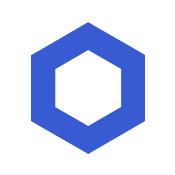When exploring the foundations of blockchain technology, two names often emerge at the forefront: Polygon and Chainlink. While Polygon is shaping the future of scalable, multi-chain ecosystems, Chainlink is revolutionizing how smart contracts access real-world data. Both projects address critical pain points in the crypto space—scalability and data reliability—but they do so through fundamentally different mechanisms. In this blog, we will dissect their architectures, use cases, strengths, and ideal audiences, providing a comprehensive guide for crypto enthusiasts and investors aiming to understand these pivotal layers of blockchain infrastructure.
Short on time? Jump to Polygon vs Chainlink Comparison
Understanding Polygon and Chainlink ?
Polygon started as a Layer 2 scaling solution for Ethereum, aiming to reduce transaction fees and improve throughput. Over time, it evolved into a multi-chain ecosystem with its own architecture, supporting a variety of blockchain networks and applications. Polygon’s architecture includes distinct layers like Heimdall and Bor, facilitating secure and scalable transaction processing, coupled with innovative zk-proofs to enhance privacy and efficiency.
Chainlink, on the other hand, is primarily known for its decentralized oracle network that securely supplies real-world data to smart contracts. As the backbone of data input in DeFi, insurance, and enterprise applications, Chainlink’s protocol ensures data integrity and reliability. Its Cross-Chain Interoperability Protocol (CCIP) extends its reach beyond data feeds to enable seamless cross-chain communication, making it a vital infrastructure component for multi-chain ecosystems.
While Polygon focuses on blockchain scalability and ecosystem growth, Chainlink emphasizes secure and reliable data feeds that underpin smart contract automation. Both projects are integral to the maturation of decentralized applications, yet they serve different core functions—one as a scaling layer, the other as a data validation layer.
Their development trajectories reflect these roles: Polygon continuously enhances its multi-chain architecture and zk-rollup capabilities, positioning itself as the infrastructure for a future interconnected web3. Chainlink, meanwhile, expands its oracle services and interoperability protocols, enabling complex, cross-chain smart contract interactions that require trustworthy external data.
Key Differences Between Polygon and Chainlink
Core Functionality
- Polygon: Polygon primarily aims to improve blockchain scalability by providing a framework for building and connecting multiple Layer 2 solutions and sidechains. Its focus is on reducing transaction costs and increasing throughput for decentralized applications, particularly on Ethereum and other compatible networks.
- Chainlink: Chainlink specializes in securing external data feeds for smart contracts through a decentralized oracle network. Its primary function is to ensure that smart contracts can reliably interact with real-world data, APIs, and cross-chain information, enabling complex automation and DeFi innovations.
Architectural Focus
- Polygon: Polygon’s architecture is designed around multi-chain scalability, including Layer 2 solutions like zk-rollups and Plasma, alongside a unified security layer. Its architecture facilitates the creation of independent chains that interoperate within a shared ecosystem, focusing on developer flexibility and transaction efficiency.
- Chainlink: Chainlink’s architecture centers on a decentralized network of oracles that aggregate, validate, and deliver data to smart contracts. Its protocols like CCIP facilitate cross-chain messaging and interoperability, emphasizing data integrity, security, and trustworthiness across different blockchain networks.
Use Cases
- Polygon: Polygon is used to build scalable decentralized apps, gaming platforms, and enterprise solutions that require fast and inexpensive transactions. Its zkEVM and other Layer 2 solutions are tailored for projects needing high throughput and privacy, with an emphasis on ecosystem expansion.
- Chainlink: Chainlink’s use cases include powering DeFi protocols, insurance, gaming, and supply chain solutions that depend on accurate external data. Its oracle network is integral for enabling trust-minimized cross-chain interactions, asset tokenization, and real-world data integration.
Tokenomics
- Polygon: Polygon’s native token, MATIC, is used for staking, governance, and paying transaction fees within its ecosystem. It incentivizes validators and developers to build and maintain scalable infrastructure, fostering ecosystem growth.
- Chainlink: Chainlink’s LINK token is used to pay node operators for data provision and to incentivize oracle participation. It also plays a role in securing the network through staking mechanisms that ensure data accuracy and network reliability.
Community and Ecosystem
- Polygon: Polygon has rapidly grown its ecosystem, hosting thousands of decentralized applications, with collaborations from major corporations like Starbucks and Mastercard. Its community focuses on ecosystem expansion, developer tools, and zk technology.
- Chainlink: Chainlink boasts a broad, globally distributed oracle network with numerous integrations across DeFi, enterprise, and government sectors. Its community emphasizes data security, protocol development, and cross-chain interoperability for a decentralized future.
Polygon vs Chainlink Comparison
| Feature | ✅ Polygon | ✅ Chainlink |
|---|---|---|
| Primary Function | Layer 2 scaling and multi-chain ecosystem | Decentralized data oracle network |
| Main Use Cases | Scalable dApps, gaming, enterprise solutions | Secure data feeds, cross-chain interactions |
| Architecture Focus | Multi-layered scalability, zk-rollups | Data integrity, decentralized oracles |
| Native Token | MATIC | LINK |
| Ecosystem Strength | Thousand+ dApps, corporate collaborations | Widespread oracle integrations, DeFi leader |
Ideal For
Choose Polygon: Developers and enterprises seeking scalable blockchain infrastructure and multi-chain solutions.
Choose Chainlink: Projects and institutions that require trusted external data, cross-chain interoperability, and oracle services.
Conclusion: Polygon vs Chainlink
Polygon and Chainlink serve as foundational pillars in the blockchain ecosystem, yet they address distinct challenges—scalability versus data reliability. Polygon’s innovative architecture provides a scalable, multi-chain environment essential for building the next generation of decentralized applications, while Chainlink’s decentralized oracle network ensures that these applications can securely interact with real-world data and other blockchains, fostering trust and automation.
For investors and developers, understanding these differences is crucial. If your focus is on creating scalable dApps or enterprise solutions, Polygon offers a robust, flexible infrastructure. Conversely, if your projects rely heavily on accurate external data, cross-chain interoperability, or tokenized assets, Chainlink’s oracle services are indispensable. Embracing both technologies can unlock comprehensive blockchain capabilities, paving the way for a more interconnected and efficient decentralized world.






